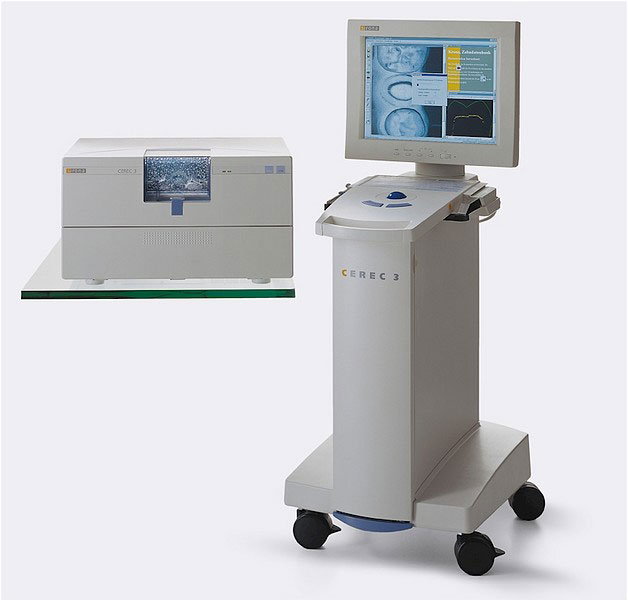
CEREC®
CEREC® restorations are most commonly used to replace old, large fillings that have failed, are fractured or have decay around them.
Regular composite resin fillings are more suited to smaller cavities, where there is still sufficient tooth structure intact to support the filling.
For larger restorations, or where teeth have cracks, ceramic (porcelain) restorations provide a far more durable and predictable result. Ceramic restorations need to made outside the mouth (indirect restorations) as opposed to fillings that are built up in the mouth (direct restorations).
Traditionally, indirect restorations have required impressions, that are sent to the dental laboratory, a temporary restoration, and a second visit to have the temporary restoration replaced with the permanent one.
Thanks to CEREC® CAD/CAM technology, we are able to do all the treatment in a single visit.
A CEREC® restoration has many advantages over conventional fillings, including:
• superior aesthetics – porcelain is far more natural looking than composite resin
• superior strength – guaranteeing greater longevity
• single-visit ceramic restoration – eliminating the need for multiple appointments, multiple local anaesthetics and temporary interim fillings
• conservation of healthy tooth structure – large CEREC® restorations are an ideal alternative to potentially short-lived composite-resin fillings or full-coverage crowns, which usually result in removal of greater amounts of natural healthy tooth structure.
CEREC® FAQ
Need more information?
For more information about our dental practice in general, or if you have a specific question about your dental care needs, please call us on (02) 8883 4560, email our dental practice at [email protected] or send us a message below and we will do our best to help you.

